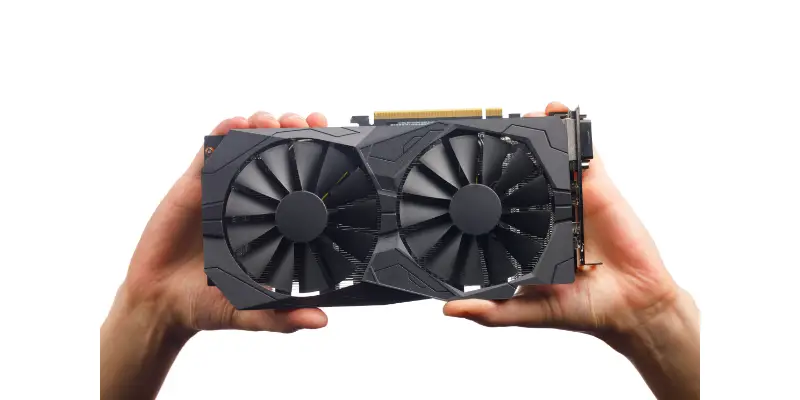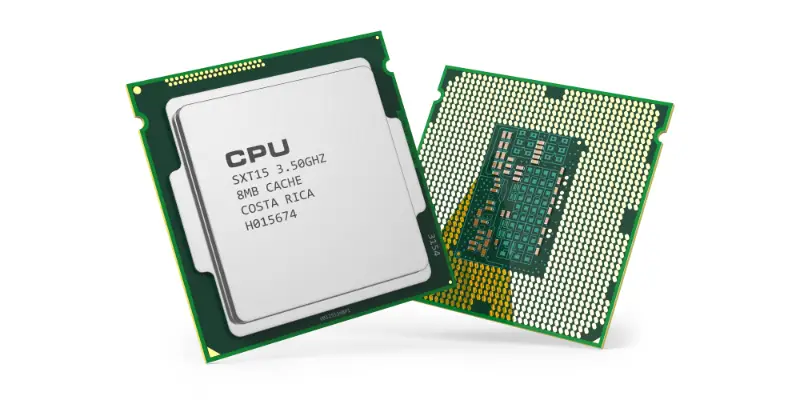Disclaimer: This post may contain affiliate links, meaning we get a small commission if you make a purchase through our links, at no cost to you. For more information, please visit our Disclaimer Page.
If you’ve ever wondered whether or not you can use a GPU as a CPU, you’ve come to the right place.
Although a GPU is capable of processing many complex tasks, it cannot be used in place of a CPU. This is because a GPU is not built to run operating systems and everyday computational functions. They are designed to process tasks relating to graphics, videos and content instead.
Table of Contents
What Are GPUs Used for?
GPU stands for Graphical Processing Unit. It does exactly as its name states; it enhances graphics for various applications, including videos. There are three key areas where GPUs are used. In gaming, in video and content creation, and in machine learning.
Over time, GPUs have become highly programmable making them capable of handling thousands of operations at once. This makes them perfect for the gaming realm where they can render 2D and 3D graphics. They also offer higher resolutions. With videos, GPUs offer parallel processing, making video rendering much faster.
For machine learning, which is commonly known as AI (Artificial Intelligence), GPUs are a great tool. This is mostly because of its parallel processing and ability to process many computational processes at once. However, in this instance, it works with the CPU.
This means that GPUs are useful for anyone that requires highly optimised graphics. An animator, for example, would benefit from having both a great CPU and GPU.
What Are CPUs Used for?
CPU stands for Central Processing Unit and it is the most important processing unit in a computer or device. It runs many programs and applications. It follows a simple process. It fetches the data, decodes it for instructions, and then executes these instructions. This is called the fetch-decode-execute cycle (also known as the instruction cycle).
The fetching stage involves fetching the instruction from the control unit which looks at the program counter register (PC) to get the memory address of the next instruction. Then the instruction is retrieved in the IR (Instruction Register) and is decoded. The control unit then signals different components of the computer to carry out the instruction.
So, in summary, the CPU is the part of a computer that performs calculations, actions, and runs programs. Nowadays, you can get a CPU with many cores. The more cores a CPU has, the more efficient it is at processing data and the faster the computer or device will run.
You might have heard the term dual-core or quad-core before? This refers to the number of processors that a CPU has. Dual means two, quad means four and there are CPUs with more processors than these.
What Are the Differences Between a CPU and GPU
While both a GPU and CPU do the same thing – process information – they are used to process different information. It is for this reason that a GPU cannot replace a CPU. In fact, these work best when they work together. Let’s look at the clear differences between them.
They Process Different Things
A GPU processes graphics used in gaming, videos, content creation, and even AI. Whereas, a CPU processes the programs and applications that are responsible for the functioning of the computer such as the operating system.
A GPU cannot handle these continuous tasks since it was built for an entirely different function. Additionally, the CPU needs more memory for processing compared to the GPU.
They Can Be Useful in Different Situations
While a computer can operate without a GPU – minus the graphics part – it cannot run applications without a CPU. However, there are instances where it is good to have a GPU, like when the user needs to render high-quality graphics or complex video and content.
GPUs are known for their parallelism, which means that they can process data a lot faster. So they are best for carrying out highly parallel computing tasks. A CPU on the other hand is able to manage all the inputs and outputs of the computer.
They Lack in Different Areas
Just as both GPUs and CPUs are good in certain situations, each one also has its own set of limitations. CPUs have to deal with many instruction sets and this can affect the overall CPU performance.
CPUs are also slow when it comes to switching between tasks due to the different processes that need to be carried out. On the other hand, GPUs have less powerful cores compared to CPUs. This means they are designed to only focus on specialized instruction sets.
They Focus on Different Things
CPUs are designed to have low latency. This means that it is made to process high amounts of data without having serious delays. This makes it better at executing instructions. The GPU is more focused on emphasizing high throughput which means that they use massive parallelism to hide latency.
Do You Need a GPU for Gaming?
There are many reasons why having a GPU is beneficial for gaming. Firstly, it is used to render graphics and video content, a function that is extremely important when it comes to gaming. Next, the GPU can handle tasks at a fast pace so it can free the CPU to handle other important tasks.
This means that the overall performance of the computer will be enhanced. This is also important for gaming. Finally, most of the games designed today aim to give the user a realistic experience where these graphics are sought after. That means a GPU is necessary to render the graphics of these games.
Can a Computer Work Without a CPU?
A computer cannot work without a CPU. It won’t be able to carry out the fetch, decode and execute the process, meaning none of the applications will work. The computer won’t be able to run the operating system either. Without a CPU:
The Computer Would Not Run
It is for this reason that the CPU is often referred to as the “brain” of the computer. That’s because it carries out the instructions or “thought processes”. Without it, nothing would run and the computer wouldn’t know which tasks need to be carried out.
Again, a GPU cannot replace the CPU because it was not designed to process these continuous computational instructions, like keeping the operating system running. The CPU also works in relation to other important components of the computer, including RAM.
It is Necessary to Access the RAM
The RAM (Random Access Memory) is responsible for sending instructions to the CPU for it to decode and execute. The CPU can also store memory on a short term basis.
It Is Responsible For Switching Between Tasks
The CPU is what makes it possible for users to switch between different tasks. For example, they may be entering data from a document into a database or spreadsheet. This requires them to have more than one application open at a time. The CPU is designed to execute these functions.
Conclusion
In conclusion, it won’t make sense to use a GPU instead of a CPU because they have different functions. Where the GPU is used for rendering high quality graphics, videos, content and other things like AI and the CPU is used to run the operations and applications of the computer.
Even though they both have different roles to play, when you use both a great CPU and GPU, your computer is likely to work much better because the GPU can free up tasks so that the CPU can perform better.


